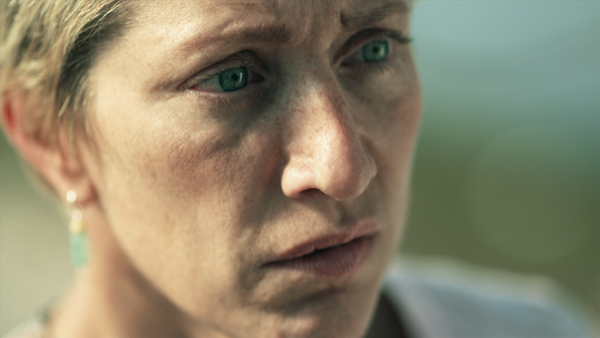|
Reviews of Recent Independent, Foreign, & Documentary Films in Theaters and DVD/Home Video

HIGHLIGHTS FROM THE 2010
SUNDANCE FILM FESTIVAL Cane Toads: The Conquest is the appropriate Sundance response to the newly revived multi-dimensional phenomenon. A 3D doc is the right mix of sarcasm and visual flair, not to mention these amphibious beasts are probably the most interesting creatures—Cameron’s blue creatures included—to leap (or hop) from the screen into theater front rows. Mark Lewis directs what is an update to his quirky 1988 debut, Cane Toads: An Unnatural History. Both films shed light on a phenomenon of their own. Australia’s burgeoning toad infestation may sound like a ridiculous subject, but it’s an undeniably fascinating one. The toads, brought to the continent in the 1930’s to rid sugar cane farmers of a persistent bug problem, instead adopted an aggressive migratory behavior and have since “conquered” nearly the whole of Northern Australia. They are the perfect storm of a biological invasion force, with no natural predators and a healthy mating cycle. Through varied interviews with eccentric locals and hilarious reenactments that mock contemporary suspense films, Lewis delights in bringing us ever closer to these funky beasts. We’re not talking snow leopards here; the toads can be found in high numbers just about everywhere.
It’s a meticulous, mystifying film. Three characters from the neighborhood, Peggy (Falco), John (Elias Koteas), and young Christina (Rachel Resheff), each have a separate life-changing experience over the course of one late-summer day. For Mendelsohn and cinematographer Kasper Tuxen, their world is a sparkling and vibrant place, yet at the same time menacing. Close-ups of dewy spider webs, lurking housecats, and other minutiae resemble the best of film artist Nathaniel Dorsky’s delicate nature studies, though 3B’s distinct musical score adds quite a different element. The Japanese-influenced mostly-woodwind composition moves from exquisite to extreme in mere seconds. Both Koteas and Falco are at critical emotional mass from the start, and uneasiness accompanies their actions. Bearing witness to the senseless, pathetic disintegration of John’s marriage, or to Peggy’s daft attempt to pry into her movie star neighbor’s private business, one can’t help but loathe the shallow world they live in. Yet we ourselves are similar, the film tells us, and thus a part of this madness. Enter the Void is Gaspar Noé’s third feature, and officially confirms him as a thinker on the most sophisticated level, yet a showman on the most base. Reveling in his distinct world of oily red-tinged visuals, impossibly smooth camera maneuvers, and often nauseating low-frequency sound (he and Daft Punk’s Thomas Bangalter used riot-control sonic technology for 2002’s Irreversible score, reportedly causing several audience members to bolt in sickness from the premiere), Noé creates a haunted ride through Tokyo’s nightlife as he describes the journey of a newly dead soul. Oscar, a small-time drug dealer, has fallen victim to an itchy trigger-fingered Tokyo police force. His soul, or whatever it is that still perceives things after we die, begins a hellish tour through flashbacks of Oscar’s life, several repetitions of the event of his death, and even a voyeuristic intrusion into the privacy of his friends’ lives. Though the film is an irresistible one to look at, it’s not composed of much more than sex, violence, and drug use. Noé’s innovation is his careful analysis of such elements—usually considered lowbrow or cheap. Out of rebellion, childishly directed toward Oscar, his sister Linda deals with the pain of their parents’ death in a very different way than he, and sleeps with her slimy boss, the owner of the club where she dances. Noé posits that souls, or whatever, are able to spy on the living, and from a hovering camera angle we see that at the very moment of Oscar’s death, the Linda is actively engaged in sex. With Oscar dead, though, and unable to perceive it, the sex would appear to be meaningless. Linda has ignored her phone, and uninformed of his death, she continues. Should Linda have known, she would have acted otherwise, and as an audience, we feel this painful irony. Yet at the same time, we learn that Oscar, as a voyeur, does in fact perceive the act, and the irony is compounded. This is but one example of how Noé delights in such complications of logic—Linda screws to retaliate, not knowing it’s in vain, and this is only the beginning. Restrepo, directed by Tim Hetherington and Sebastian Junger, garnered a grand jury prize in the American documentary category. These clean-cut, muscle-bound journalists somehow resemble infantrymen, and fearlessly follow a combat unit into one of the most dangerous theatres on the current war front: Afghanistan’s Korengal Valley. In one of the film’s opening shots, Junger’s camera is thrown to the ground in a RPG blast. Both camera and operator barely escape intact. The filmmakers are soldiers armed with video rather than bullets, and they use this ammunition in quite a different way. Depicting
intimate cross-sections of the lives of soldiers, but without any real
narrative arc, this kind of footage, and in a larger sense this film, is
an ineffective weapon. Instead, one might call it cinema verify—akin
to verité—in its sheer ability to authenticate what is a
distant war for many of us. It’s a film that lies somewhere between a
news dispatch and a video diary (my instinct is to rename it “Cops:
Afghanistan”). There are few if any like it, but beyond the
aforementioned über-realism, not much is actually being proposed other
than that there is a war, it is deadly, and there are real people
fighting it.
Michael Lee
|


